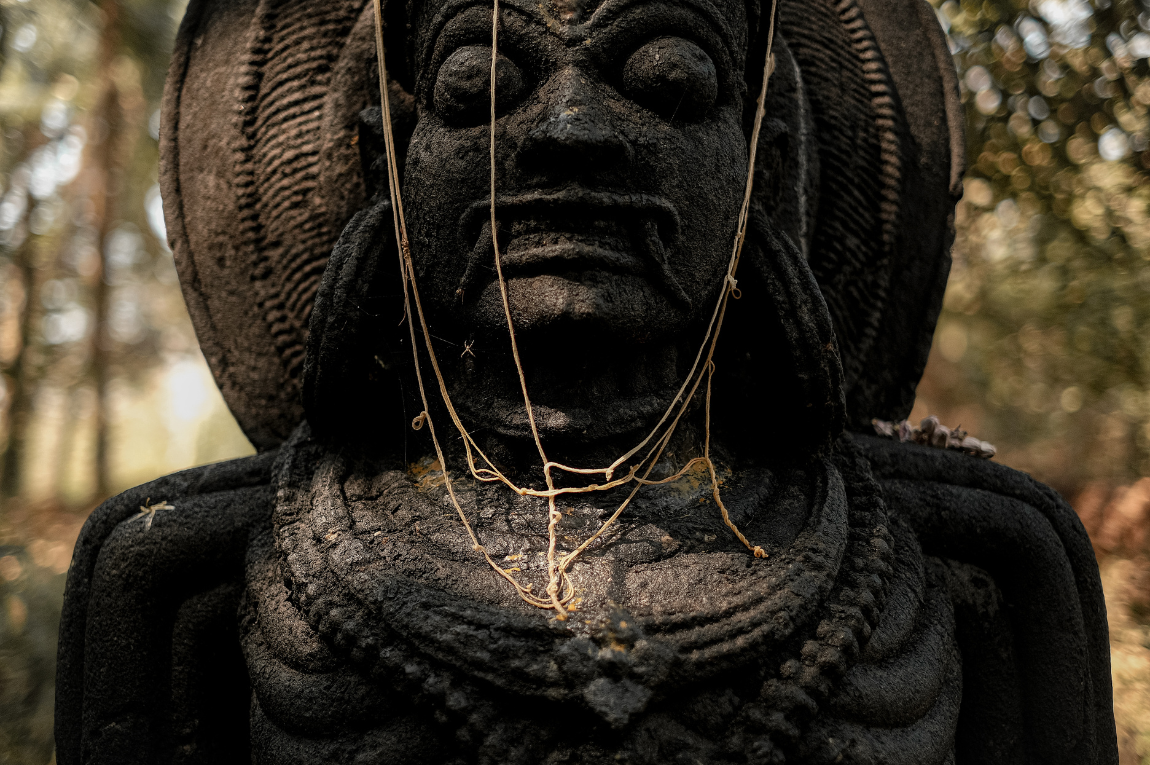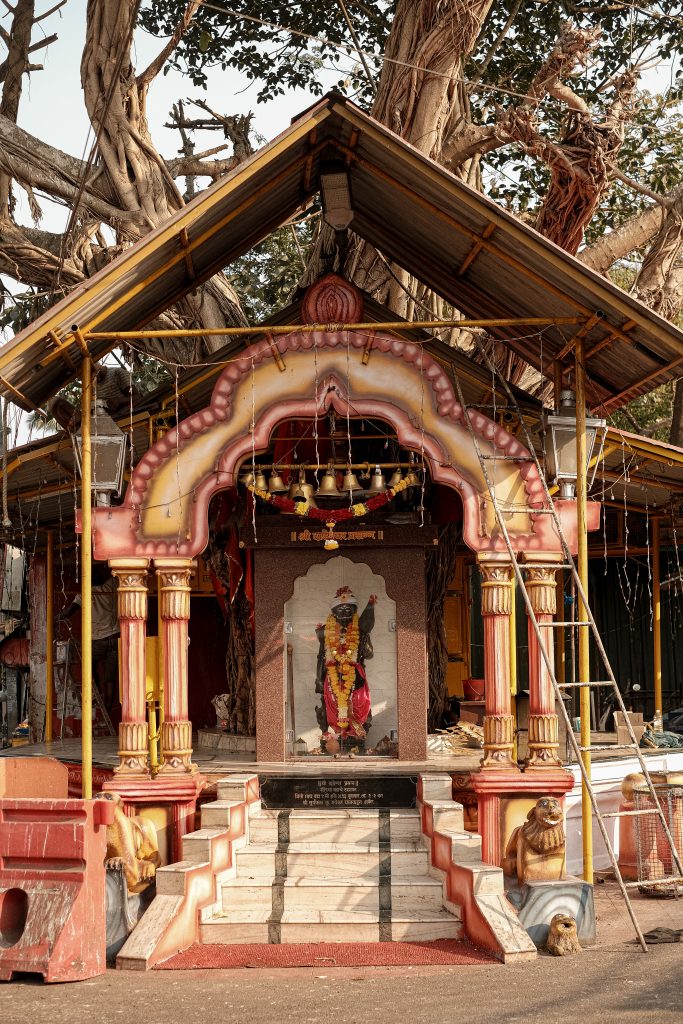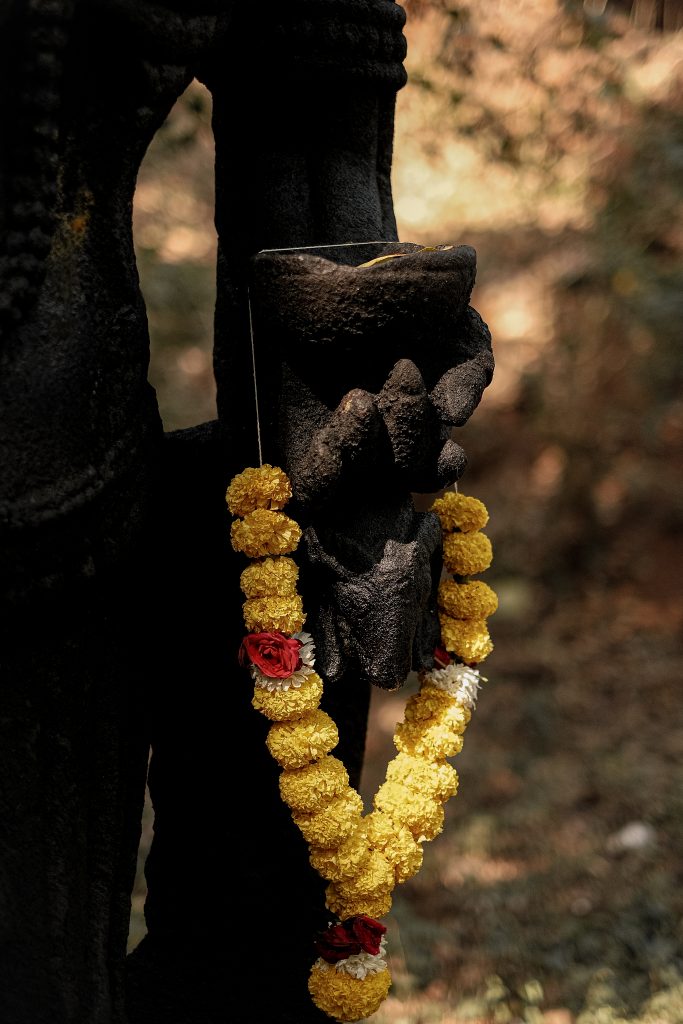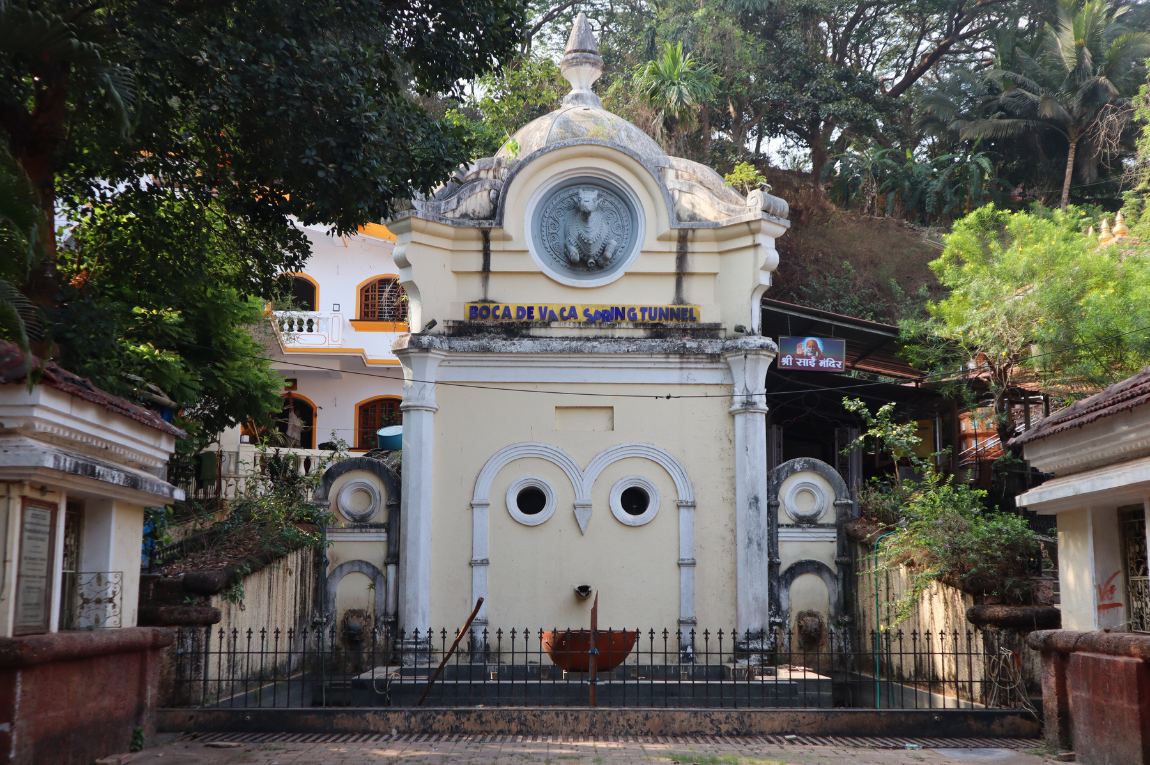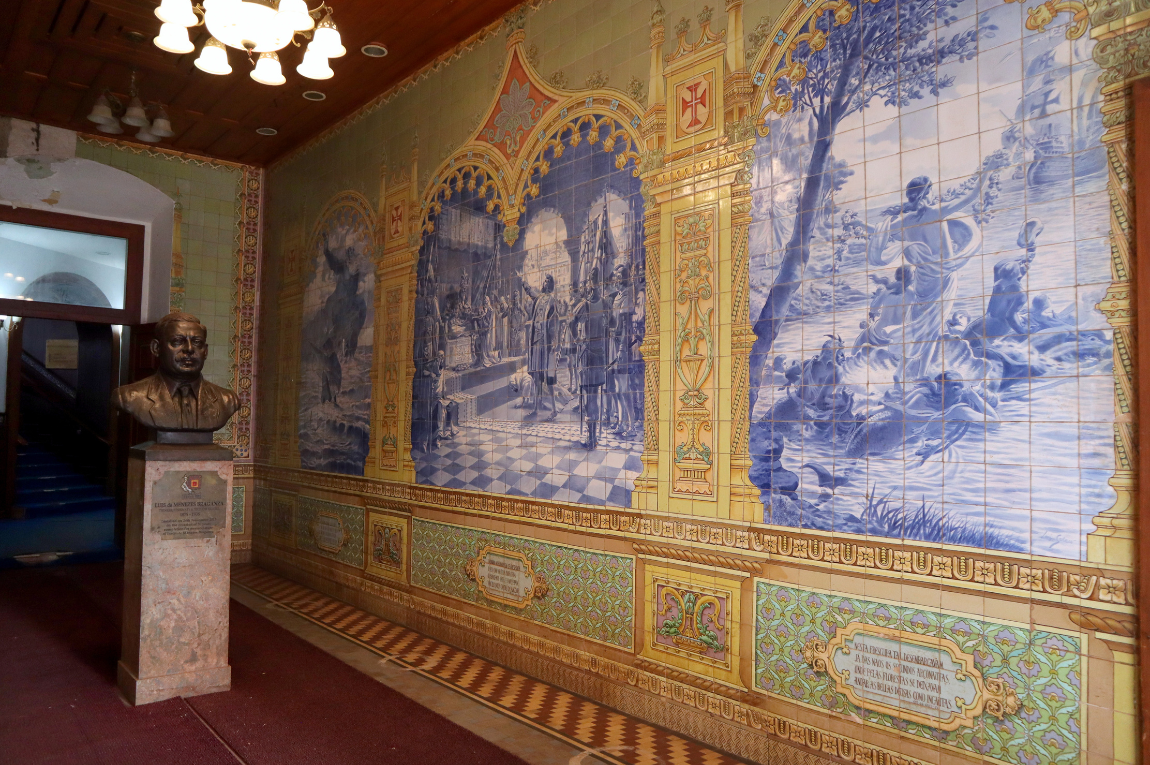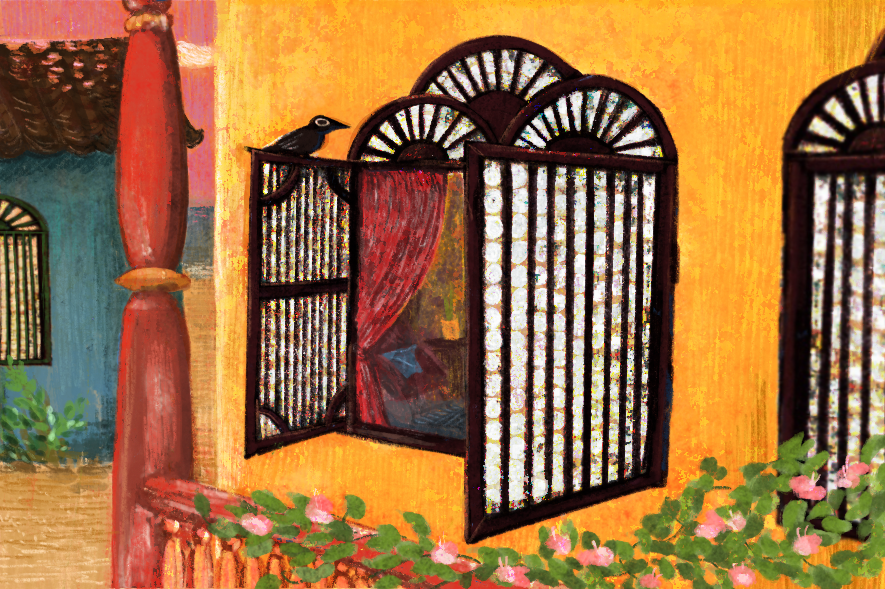When I first moved into my home in Saligao in December 2006, I was advised by a neighbour to refrain from building a compound wall higher than what our vaddo rakhno could step over. “He walks around your house at night,” I was told. “So don’t block his path.” Little is known about the rakhandaars — playfully known as rakhnos (derived from the Konkani word ‘rakh’, or ‘protection’) — or the guardian spirits of Goa. Believed to safeguard tracts of fields, villages or crossroads by Goans across faiths and castes, the rakhnos take both tangible and intangible forms.
These guardian spirits, found both in and around Goa, have hierarchies of their own — in terms of the powers they possess across geographies and their ability to grant wishes — and are present in many forms. There are some that are believed to inhabit banyan trees and have neither a tangible form nor a built shrine. A few red- or saffron-hued flags or strips of fabric signifying austerity and renouncement tied to the branches of trees — or perhaps a lit brass or earthen lamp — are indications of these spirits’ presence. There are also the rakhnos that have small square or rectangular shrines dedicated to them, made from cement or concrete or simple tin sheets. Look out for these particularly where a river meets the sea; at points where fishing boats go out into the water; or at a crossroad. These shrines, too, are devoid of any tangible figure; for instance, the one at the Patto Bridge in Panaji.
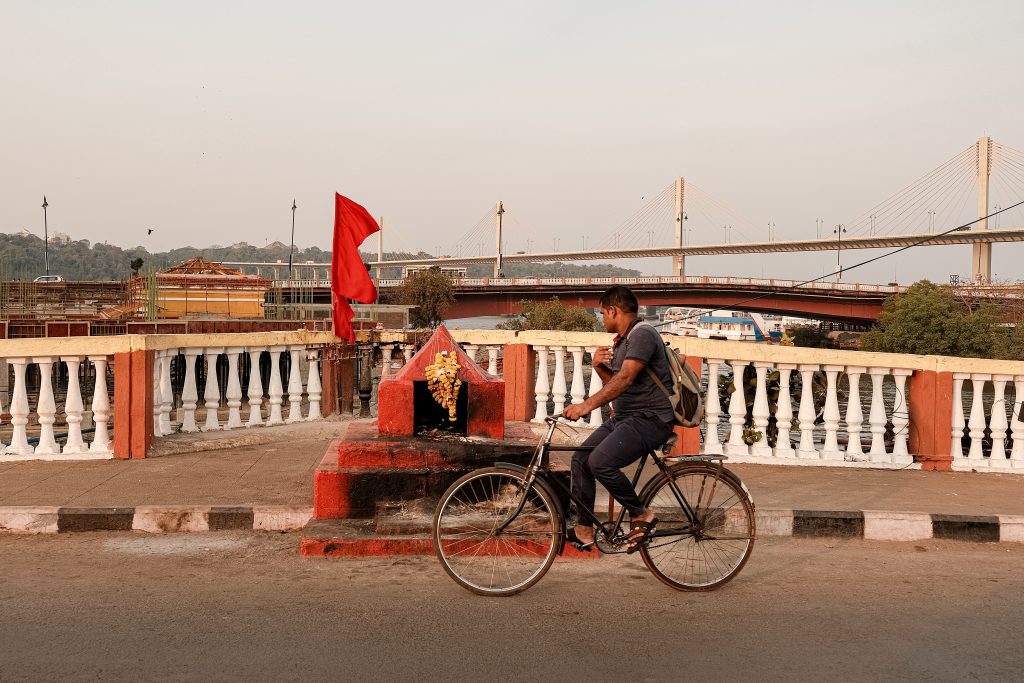
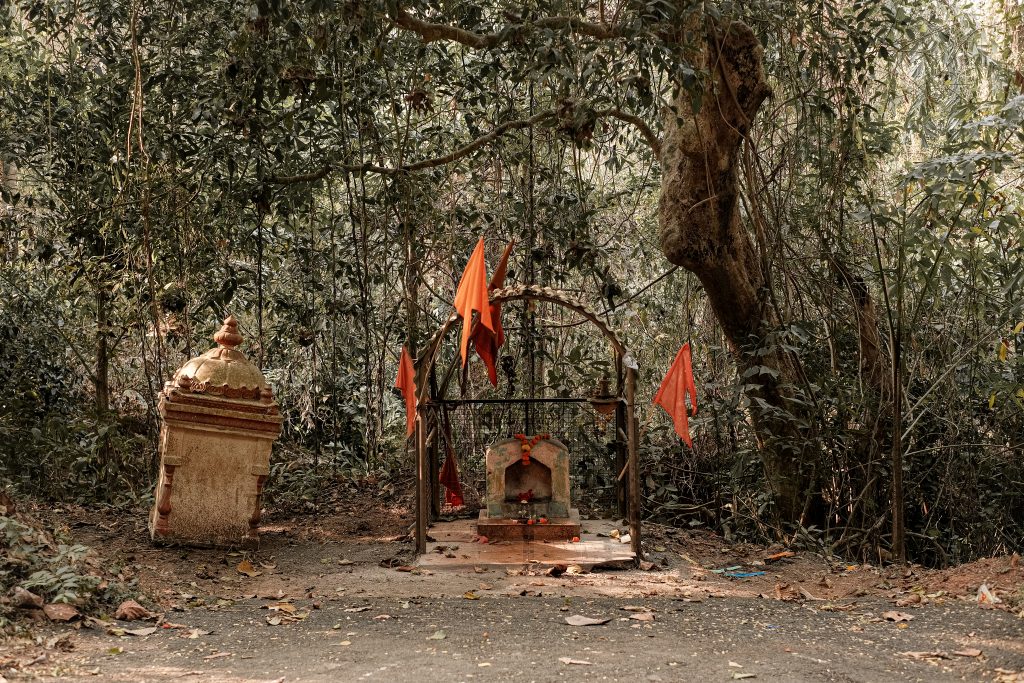
Other rakhnos take an anthropomorphic form, such as a shapeless rock covered in vermillion and turmeric with a pair of rather benevolent eyes painted on an imaginary face. An example is that of the rakhnos called Buwasaheb, located on the Pasarni Ghat, en route to Panchgani from Wai in Maharashtra.
There are also rakhnos carved out of granite or basalt rock, with specific names and rather picky choices for offerings. Take the seven-feet-tall Bodkya, for instance, who guards the market town of Mapusa in north Goa. His name is derived from the local Konkani term for pandanus or screw pine (an indicator of the presence of water), abundant on the ground where his temple stands today. Constructed just like any other home in the village, the temple was known as devachi kudd, or ‘a house for god’. However, to Aryanise such structures, a large temple was constructed on the site about two decades ago. The erstwhile clay figure of Bodkya has been replaced by a superficial fibreglass one, with the nomenclature now altered to Shri Bodkeshwar.
While there are several versions of this rakhno — each having its own name — not all of them as are as tall as Bodkya. The rakhnos usually have a benevolent presence in the village. However, there is one whose physical form may not be appealing to the faint-hearted. This is the Nagdo Vetaal (or Betaal) in the village of Loliem in south Goa. If the story is to be believed, as he was walking through the village, people begged him to stay; some say because they took him to be the ascetic Shiva. He would do so only if he was offered a virgin with a hundred sons. The clever villagers presented him with a bunch of 100 arecanuts (the tree is self-pollinating) and Nagdo Vetaal stayed on, on the condition that he should not be caged in a temple, and that he would bathe himself in any of the wells in the village. This is why the wells in Loliem are not covered, even today. There is a small pile of cow dung set aside by the well so he can help himself to a good scrub. People often leave larger-than-life size chappals so he can stroll through the village.
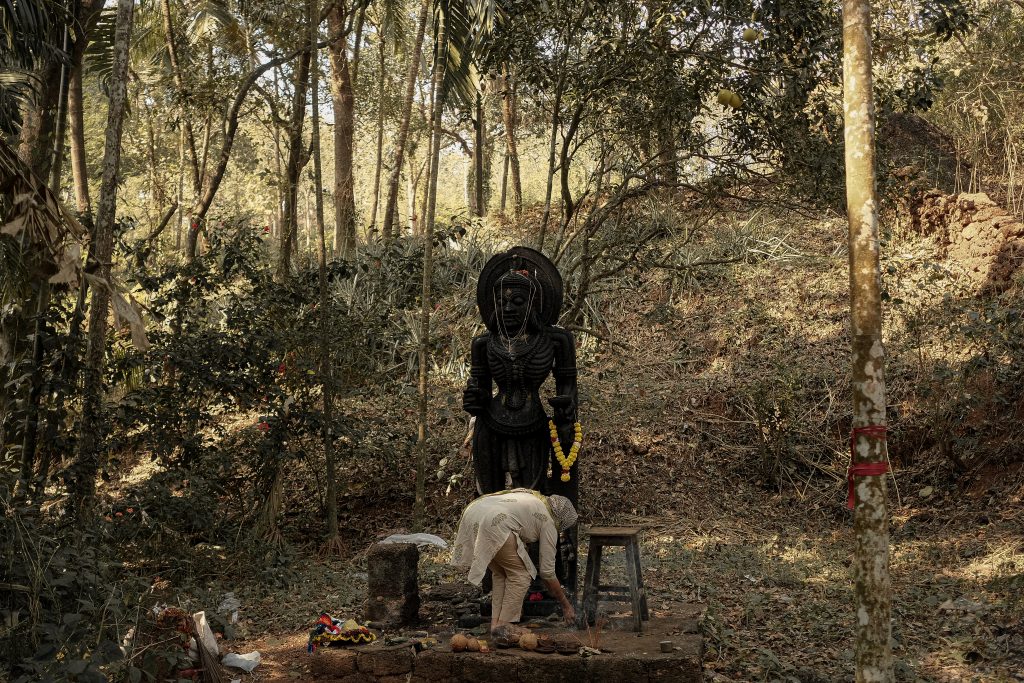
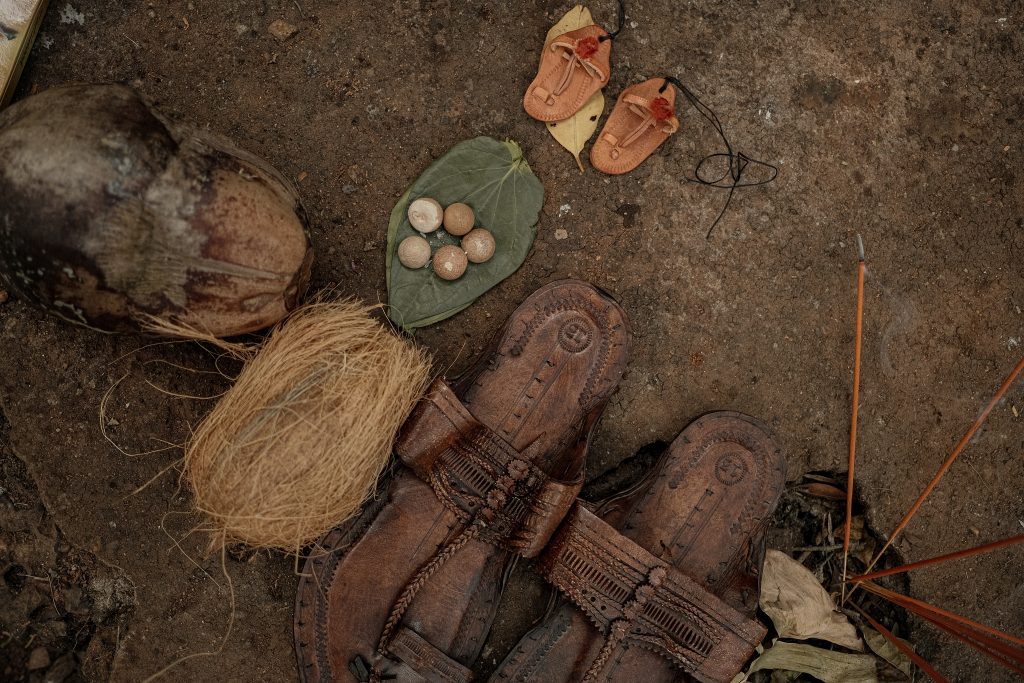
Furthermore, not all rakhnos take on the masculine form; there is one known woman rakhno too, in the Sattari taluka of north Goa. There are mataari-mataaro rakhnos, an elderly couple, found in the village of Chigulle on the Goa–Karnataka border as well as in Sattari. And do they all want chappals? Not really. Some want green glass bangles; some, colourful fabric; and some, just maan or a respectful namaskar. Some are known to help you find lost articles. Some will tell you where an absconding cow is. And some will simply be.
Our selection of stays across India, best visited for their design and style. Check in
Heta Pandit is an independent researcher and the author of 11 books on Goan heritage. A founder member of the Goa Heritage Action Group, she is currently working on a book titled Objects and Memories from Goa. She is on Instagram at @heta._pandit.
Aaron Monteiro is a photographer and filmmaker based in Goa, with a deep interest in street life, heritage and culture. He is on Instagram at @_aaron.monteiro_.
